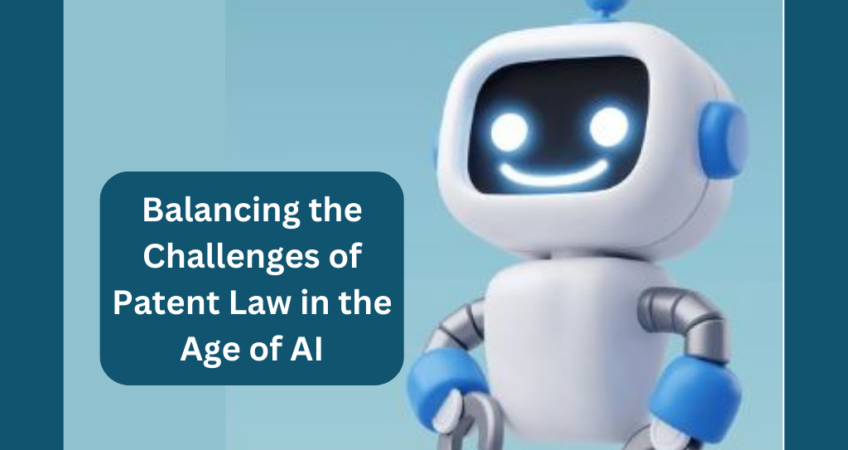Artificial intelligence (AI) is a cornerstone of innovation in today’s rapidly evolving technological landscape. AI has permeated every sector, promising efficiency, accuracy, and unparalleled advancements from healthcare to finance and transportation education. However, as AI continues to push the boundaries of what is possible, it also presents unique challenges to patent law in the age of AI.
At its core, patent law exists to incentivise innovation by granting inventors exclusive rights to their creations for a limited time. This protection encourages investment in research and development, fostering a culture of innovation essential for societal progress. However, the advent of AI has blurred the lines between inventorship and ownership, raising critical questions about how patents should be granted and enforced in the age of machine intelligence.
One of the primary challenges posed by AI in patent law is determining inventorship. Traditionally, inventors conceive of and reduce an invention to practice. However, AI systems can generate novel solutions autonomously without direct human intervention. This raises the question: who should be credited as the inventor when the creation arises from the collaboration between human ingenuity and machine learning algorithms?
Take, for example, the case of Dabus, an AI system that autonomously generated inventions in design and engineering. In 2019, the AI system generated two inventions—a fractal-based food container and a device for attracting enhanced attention—filed for patent protection by their creator, Dr. Stephen Thaler. However, patent offices in various countries, including the United States and Europe, rejected the applications because only natural persons could be named inventors.
This case underscores the complexities of AI-generated inventions and the need to reevaluate patent laws to accommodate technological advancements. Should AI systems be granted legal personhood, allowing them to be named as inventors? Or should the focus remain solely on human creators, with AI relegated to a tool used in the inventive process?
Furthermore, the issue of prior art poses a significant challenge in patenting AI-generated inventions. Prior art refers to existing technologies or publications that may invalidate a patent application by demonstrating that the claimed invention is not novel or non-obvious. With AI’s ability to analyse vast amounts of data and generate solutions, there is a risk that AI systems may inadvertently replicate existing technologies without the inventor’s knowledge, leading to patent disputes and legal uncertainty.
Another pressing concern is the patentability of AI algorithms themselves. While patents traditionally protect tangible inventions or processes, the intangible nature of algorithms complicates the matter. Should AI algorithms be eligible for patent protection, considering their role as foundational tools in innovation? Or does patenting algorithms hinder technological progress by restricting access to essential building blocks of AI development?
Moreover, the rapid pace of AI advancement raises challenges in patent examination and enforcement. Patent offices and courts may need help to keep pace with the evolving landscape of AI technologies, leading to inconsistencies in patent rulings and delays in granting or litigating patents. Additionally, AI innovation’s global nature necessitates harmonising patent laws across jurisdictions to avoid conflicts and promote international collaboration.
In response to these challenges, legal scholars, policymakers, and industry stakeholders are actively exploring potential solutions to reconcile AI with patent law. Some propose creating a new category of patents tailored to AI-generated inventions, while others advocate updating existing patent laws to accommodate technological advancements. Additionally, collaborative efforts between governments, academia, and industry are essential to establish guidelines and best practices for patenting AI technologies.
In conclusion, the intersection of AI and patent law represents a delicate balancing act between fostering innovation and protecting intellectual property rights. As AI continues redefining the boundaries of creativity and invention, patent laws must evolve to address the unique challenges of machine intelligence. By engaging in thoughtful dialogue and proactive reform, we can ensure that patent law remains a catalyst for innovation in the age of AI.

